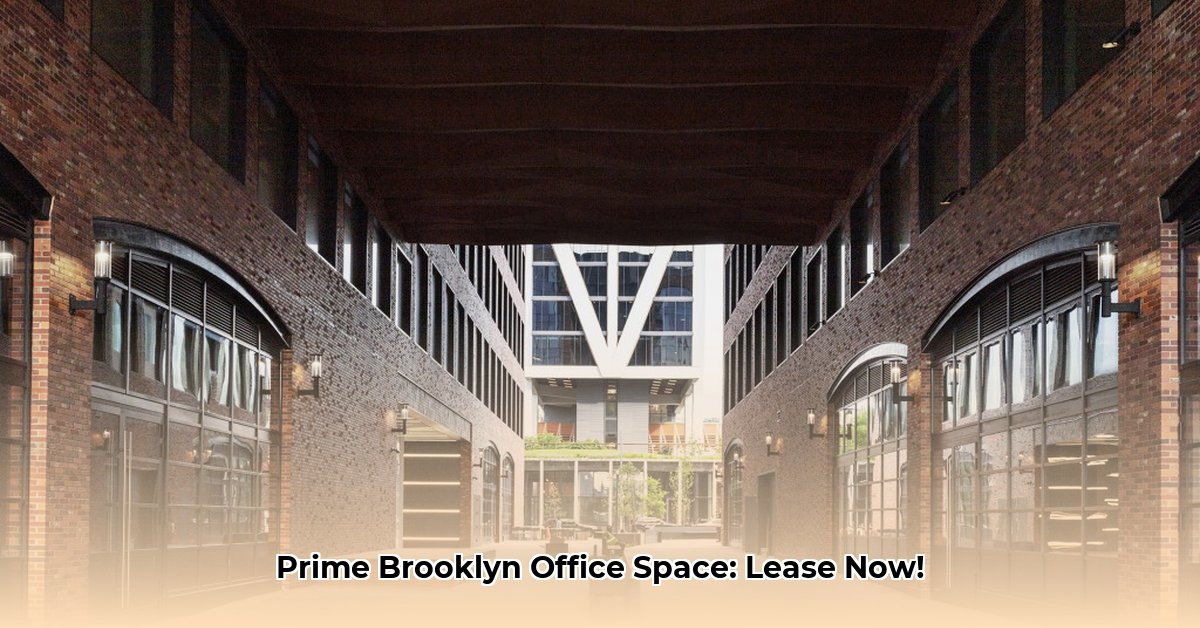
A Case Study of 25 Kent Avenue's Success in Williamsburg's Evolving Office Market
25 Kent Avenue, a half-million-square-foot office building in Williamsburg, Brooklyn, represents a significant investment in a rapidly transforming commercial real estate market. This case study analyzes its success, challenges, and implications for future developments in the area. The building's strategic location, modern amenities, and a strong anchor tenant have fueled its initial success. However, sustaining this momentum requires a nuanced understanding of the market dynamics and proactive risk mitigation strategies.
Background: Williamsburg's Transformation
Williamsburg's evolution from an industrial area to a vibrant creative hub has attracted significant investment in commercial real estate. 25 Kent Avenue capitalizes on this transformation, offering modern office space in a location with excellent access to public transportation, including the G and L subway lines and the East River ferry. Proximity to parks like Bushwick Inlet and East River State Park further enhances its attractiveness. However, this burgeoning popularity also fosters intense competition, with multiple new developments vying for tenants. This competitive landscape presents both opportunities and challenges for 25 Kent Avenue's ongoing success.
Development and Design: A Blend of Modernity and Williamsburg Charm
25 Kent Avenue stands out with its modern design and high-quality amenities. Beyond the workspace itself, the building features generous retail space, rooftop terraces, fitness centers, ample parking, and even electric vehicle charging stations—amenities carefully selected to appeal to today's workforce. The presence of Kith, a prominent streetwear brand, as an anchor tenant significantly boosted the building's profile and attractiveness to other businesses. This strategic leasing decision highlights the importance of securing a high-profile tenant to build credibility and momentum early in the leasing cycle.
Market Analysis: Navigating a Competitive Landscape
The strategic location of 25 Kent Avenue is a key driver of its success. Easy access to public transit and nearby amenities are powerful attractions for potential tenants. The initial leasing strategy, anchored by Kith, proved highly effective in generating significant interest and attracting other high-profile businesses. However, maintaining high occupancy rates requires ongoing efforts to adapt to the evolving market dynamics. The influx of new office developments in Williamsburg increases competition, creating a need for a robust and flexible leasing strategy that prioritizes both tenant acquisition and retention.
Financial Performance: A Need for Transparency
Data scarcity on current occupancy and financial performance limits a complete evaluation of 25 Kent Avenue's financial health. While the building’s early leasing success suggests positive financial performance, a lack of publicly available data prevents a definitive assessment of occupancy rates, rental income, and return on investment. This lack of transparency represents a significant obstacle in fully evaluating the project’s overall success. Greater financial transparency would be beneficial to understanding the long-term viability and profitability of this development.
Challenges and Risks: Mitigating Potential Threats
25 Kent Avenue faces several potential challenges, including:
- Market Fluctuations: Economic downturns could impact occupancy rates and rental income.
- Increased Competition: New developments in Williamsburg create a more competitive leasing environment.
- Operational Issues: Unexpected maintenance or operational problems could disrupt tenant satisfaction.
To mitigate these risks, proactive strategies such as diversifying the tenant base, offering flexible lease terms, maintaining strong financial reserves, and ensuring proactive building maintenance are crucial.
Risk Assessment Matrix
| Risk Category | Likelihood | Impact | Mitigation Strategy |
|---|---|---|---|
| Fluctuating Occupancy Rates | Medium | High | Diversify tenant base; offer flexible lease terms; proactive marketing |
| Economic Downturn | Medium | High | Maintain strong financial reserves; explore alternative revenue streams |
| Increased Competition | High | Medium | Highlight unique amenities & location; offer competitive pricing & flexible terms |
| Unexpected Operational Issues | Low | Medium | Proactive maintenance; robust property management; comprehensive emergency plans |
Conclusion: A Testament to Strategic Planning, but Ongoing Monitoring is Key
25 Kent Avenue’s success is a testament to strategic location, modern design, and a strong initial leasing strategy. Its early successes highlight the power of securing key anchor tenants. However, the building's long-term viability depends on navigating the competitive market, adapting to economic fluctuations, and proactively mitigating potential risks. Increased transparency regarding financial performance would allow for a more complete analysis of the project's overall success. The continued story of 25 Kent Avenue will serve as a valuable case study for future commercial developments in Williamsburg and similar dynamic urban environments.